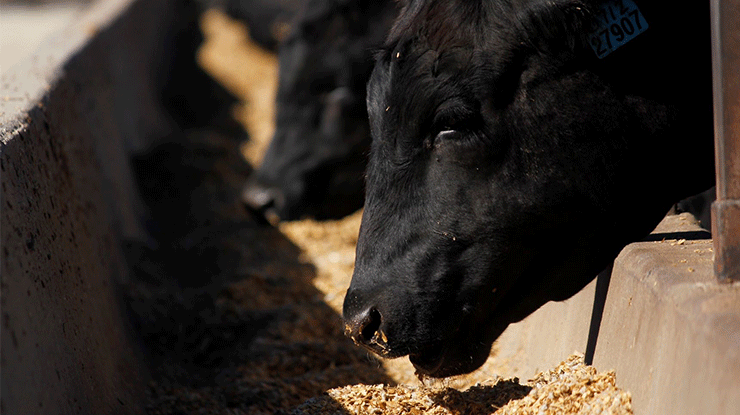
Revision of feedlot nitrous oxide emissions from feedlots
Key points
- Revising the emission factor for N2O emissions from feed pads has decreased the reported emissions of the Australian feedlot sector by an estimated 19%.
- The implications of revising the emission factor for feed pads – and the subsequent reduction to reported greenhouse gas (GHG) emissions from the feedlot sector – will help direct future research and mitigation strategies.
In a win for the feedlot industry, the emission factor for nitrous oxide (N2O) emissions from feed pads has been revised as a result of research funded by MLA and the Australian Government.
According to a review of previous Australian research, the default parameters used to calculate emissions from manure sources in Australian feedlots resulted in emissions being overestimated.
The Australian feedlot industry has invested in several research programs over more than a decade to understand emissions from manure sources and assist the development of a revised emission factor for nitrous oxide (N2O) emissions from feed pads.
The research review, completed by Queensland Department of Agriculture, Fisheries and Forestry and led by Dr Matt Redding, and by the University of Melbourne, led by Professor Deli Chen, has significantly improved understanding of factors that control emissions in Australian feedlots.
Supported by MLA, a targeted review of research to date of the feedlot N cycle, specifically focusing on N2O emissions from feedlot manure pads, proposed the emission factor for feed pads be revised down to reflect industry practice and research findings.
The review was submitted to the Climate Change Division of the Commonwealth Department of Industry, Science, Energy and Resources and was adopted in the most recent National Inventory Report, published in April 2021.
The revision in the emission factor for N2O emissions from feed pads decreased the reported emissions of the Australian feedlot sector by 19%.
Dr Stephen Wiedemann from Integrity Ag & Environment, who led the review, said the implications of revising the emission factor for feed pads and subsequent reduction to reported GHG emissions from the feedlot sector are significant.
“The review of feedlot feed pad N2O emission research determined that the default emission factor previously used in the National Inventory Report for estimating GHG from feedlots was not supported by Australian research.
“On average, Australian studies report 73% lower emissions than the current Intergovernmental Panel on Climate Change (IPCC) inventory estimates,” Dr Wiedemann said.
“The result is that emissions aren’t nearly as high as we thought they were.
“Manure nitrogen was found not to be the first limiting factor driving N2O emissions from the feed pad. This will help direct future research and mitigation strategies.
“People use these numbers to make judgements about the industry and we need to have knowledge to guide where research is directed, and practice change is undertaken.”



